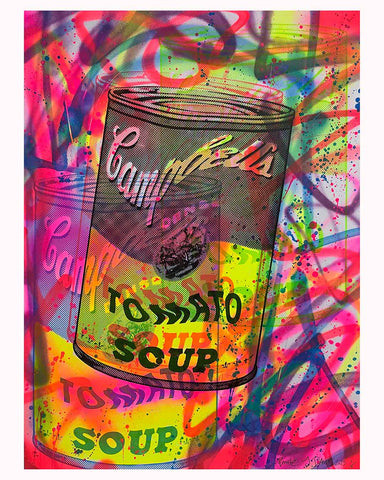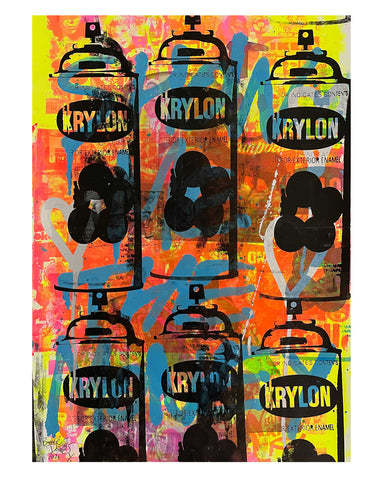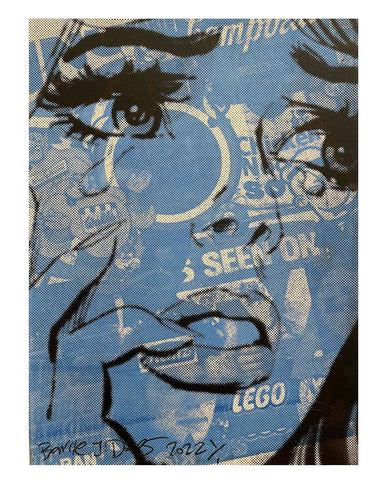What exactly is an original print? The phrase "original print" has a special meaning in the broad field of art, and it's frequently surrounded by mystery and intrigue. The 1850s saw a sharp increase in demand for print copies, especially those that imitated the styles of modern and Old Masters, due to profound changes in society and culture. During the Industrial Revolution, a well-read and prosperous middle class emerged, opening up the market for luxury products to consumers beyond the traditional nobility. Contemporary British artists who depicted recognisable topics were preferred by this new class of collectors. As a result, publishers and print dealers began to specialise in reproducing engravings and mezzotints, which saw a sharp increase in production. Why do art aficionados find original prints so captivating, and what exactly makes an original print an original?
Defining Original Prints
Fundamentally, an original print is a piece of art made by a printmaker utilising methods like screen printing, lithography, engraving, or etching. Themes in art changed to represent situations from daily life, encouraged by government art committees that promoted public art. Acknowledging the visual arts' capacity for mass communication, they played a pivotal role in advancing societal advancement. The Art Union reiterated this idea in 1847, highlighting the importance of art in reaching the general public as well as the affluent. Victorian painting was directly impacted by the growing demand for copies, since artists frequently gave copyright sales precedence over original canvases. In order to satisfy the market for reproductions, painters modified their techniques and concentrated on favoured themes. In an attempt to make lucrative investments, publishers chose themes and artists who had a track record of success in the print market. This resulted in a monopolistic environment where particular subjects and artists controlled the print and painting sectors. Original prints are created by the artist directly or by hand, in contrast to copies or reproductions. Since each print carries the artist's vision and skill, it is regarded as an original work of art.
An artwork's status can be granted by one person, usually the creator, but it can also be given by others. A distinct kind of "aesthetic" enjoyment is implied by the definition. Although acknowledgment in and of itself is not the main issue, it is necessary to talk about it in order to set the stage for the main idea. We can appreciate plays, poems, and paintings just as much as we do paintings, and the variety of the objects we can appreciate doesn't always mean that the types of appreciation change. There shouldn't be any intrinsic issues at all if we define "appreciation" as recognising the attributes that make something worthwhile or useful during its experience.
The Printmaking Process
An original print requires technical know-how and painstaking attention to detail, as well as labor-intensive steps. Terms like "idea" and "art concept" are frequently used in modern art to describe short- to medium-term creative endeavours, but "purpose" usually refers to overarching themes that influence long-term artistic actions. After about 12 years of experience following art school, artists usually establish a "creative vision" through a series of phases of expertise development. This artistic vision functions as an abstract topic or concept that directs the course of a series of artworks and offers consistency as a foundation. After choosing appropriate motifs, artists use this creative vision to inspire new ideas and artistic approaches.
"Analogical modification" is the process of creating original artistic notions by adjusting some aspects of earlier works of art in an analogous way. As artists gain expertise, their patterns of art concept development change. They also use their creative vision for analogous modification, which allows them to create a variety of interconnected artwork series. In this network, a creative vision is essential for directing the construction of concepts and the generation of ideas.
Etching and Engraving
Using these methods, a design is incised or carved by the artist onto a metal plate (typically steel for engraving and copper for etching). Line engraving is still unlikely to be replaced for heraldic work, but woodcut is a solid substitute in original bookplate design. One famous example of the lasting importance of line engraving is Albrecht Dürer's Coat-of-Arms with the Cock, a masterwork of engraved heraldic design. Even yet, Ruskin thought that metal engravings were imperfect by nature. It seems that editions in the world of old master engravings and etchings have never been artificially limited. Plates were frequently printed at the publishers' or printsellers' discretion, sometimes long after the creators' deaths. There was no aesthetic reason to impose restrictions as long as the plate or block remained sturdy. Because the procedure is labor-intensive, editions might only be limited by etchers who manually printed their plates. But the public's predilection for rarity over artistic merit and printsellers' shrewd assessment of demand are frequently the decisive factors.
Lithography
The repulsion of water and oil serves as the foundation for this technique. The important woodcut "View of Florence," which is kept in Berlin and dates to approximately 1490, is an example of one of the first uses of the woodcut technique to represent maps and geography. However, line engraving and lithography eventually took the place of woodcutting for comparable uses. These enormous woodcuts, like Domenico delle Greche's "Destruction of Pharaoh's Host," which was inspired by Titian, were frequently printed from several blocks, with the impressions that were left behind being painstakingly assembled. The artist uses a greasy tool, like a particular crayon or ink, to create the image on a smooth limestone surface. Following the application of water and ink, the printed image is produced as the wet portions repel the ink and the greasy areas attract it.
Screen Printing
Screen printing, also referred to as silkscreen or serigraphy, is the process of making a stencil on a fine mesh screen. For a number of reasons, including its ability to produce vivid colors—even on dark fabrics—and its ability to apply layers of paint or ink to the surface, screen printing is commonly used to produce high-quality prints. Furthermore, the method's effectiveness in duplicating designs several times with a single stencil contributes to its appeal. This makes it perfect for making bespoke clothes in bulk, such work clothes or uniforms for sports teams. Intricate multicoloured designs can also be achieved through screen printing with the right tools and knowledgeable printers. In comparison to digital printing alone, the technology enables better colouring, albeit the number of colours that can be used is limited. The desired picture is then created by pushing ink through the stencil and onto the paper underneath.
The Significance of Original Prints
In their early careers, artists try to refine their artistic abilities by learning from the mistakes they made in earlier pieces. The process of forming what we refer to as a “creative vision” seems to be intimately related to the development of artistic expertise. A creative vision is acquired from years of collected experience in artistic creativity and functions as a directing force, much like a "career anchor" in vocational career development. Schein claims that a person's career anchor develops over time as a result of their work experience and personal experiences, bolstering their self-esteem and impacting their professional decisions. It is certainly true that years of involvement in art-making activities are necessary for the development of a creative vision. In order to refine one's competence, it appears that reflection on one's artistic endeavours is crucial to this developing process. Within the field of expertise studies, researchers frequently stress the significance of exact skills and organised knowledge in maintaining expert quality. However, there is still a knowledge vacuum regarding how experienced artists develop their ability to come up with ideas and thoughts as well as how they formulate their key creative topics.
Original prints are evidence of the everlasting legacy of printmaking customs and the limitless imagination of artists over time. In order to secure financial success, artists were encouraged to adopt formulaic approaches by the reproduction industry. This can be seen in the instance of John Everett Millais, whose series of paintings portraying romantic tragedies were later engraved, building popular expectation for the next release. With their alluring textures and layers of lithography or etching, these prints entice spectators to lose themselves in imaginative and beautiful worlds.
For more information about my prints please get in touch.





